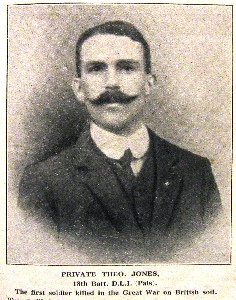
Private Theophilus Jones 18th Battalion D.L.I.
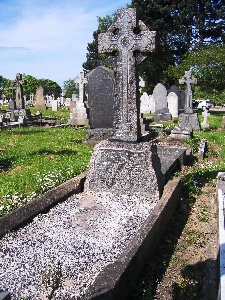
Headstone Stranton Cemetery
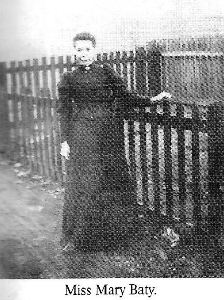
Miss Mary Baty
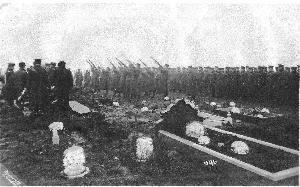
Funeral service of Private Theophilus Jones
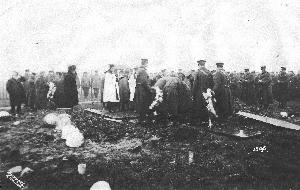
Funeral service of Private Theophilus Jones 1
Theophilus Jones was born in Darlington on the 14th September 1885, to John? and Lettie Jones (Liverpool). He was the eldest of three boys, Charles who was born 1887 at Norton, Durham, and Alfred who was born at Northallerton in 1890. They were living in Malpas Terrace, in Northallerton in 1891.
In 1901, Theophilus, now a trainee teacher, his mother Lettie, and his brother Alfred had moved to Newsham, North Riding, and were living with stepfather John Lowes, aged 39, a gamekeeper, and step sister Annie Lowes.
In 1911 the family, were residing at 14 Dorset Street, West Hartlepool. Theophilus was now an Elementary teacher employed by the West Hartlepool Education Committee. He had started as an assistant teacher at St Aidan's Church of England School in Longhill, Hartlepool from the 1st April 1905. The school log book records the entry "Mr Theo. Jones joins School Staff. 'In addition, the School log book, also records an entry that reads'Theophilus Jones, aged twenty years."
Theophilus Jones was an active sportsman, he played cricket and football and was involved in the rugby football team.
Theo witnessed the New Zealand "All Blacks" football team playing against the Rovers and West team, on 11th October 1905, as the school was closed to give an opportunity for staff and pupils to witness the match. The result was New Zealand 63, Rovers and West Nil!.
Theo had a friend called Mary Baty and they were often seen 'walking out' together. Miss Baty was a teacher at the same school. She never married.
In May 1912, there is another log book reference to Theo as he failed to return to school after a Whitsuntide break. He had been to Paris with a large group of male friends, the 'Excelsior Male Voice Choir'. They were on a singing trip over the vacation and were held up on their return journey, it was a day later that he was again back with 'Standard VI'.
'Choirs were very popular in West Hartlepool in the early 1900s. A world festival was held in Paris at Whitsun each year. Excelsior competed in 1911 & 1912 and did well in 1911. At the end of a competition there was a parade of all contestants-hence the sign which had a teddy-bear (representing the monkey)'.
In December 1912, Theo was at Middleton as part of the Porpoise Club swimming club.
On the 30th September 1913, the school log book again reports Mr T. Jones left to-day. Mr Jones has been appointed Head Teacher of the C of E School, Thringstone, Leicestershire. His replacement, George William Rouse, aged 23, spent 4 years at the Lister Street Senior School and Bede College Durham, and eventually became Headmaster of the St. Aidan Memorial school.
The Vicar of Thringstone, the Revd Cherverton Shrewsbury, was once the curate at St Aidan's, West Hartlepool, (prior to that he held curacies at Leadgate and Sacriston, Durham), and would have known the Reverend W. J. Knowlden, who was the main driving force at St. Aidan's.
Theo took up his appointment as Headmaster in Thringstone on the 1st October 1913, and very quickly became a popular member of the community. He played rugby for the Coalville Rugby Club and also was appointed choirmaster of St Andrews church.
On the 2nd October 1914, Theo wrote his resignation letter confirming that he is leaving the School to enlist. He left the School in charge of Mr Woodward B.S.
Theo volunteered and returned to West Hartlepool to enlist on the 3rd October 1914. He was 5 feet 9 inches tall, fresh complexion, brown eyes with black hair. Stated religion C of E. He had at some time lost his appendix, as the scar was noted in his distinguishing marks.
Before he left Thringstone, he was presented with a prayer book by his pupils. He also kept in touch with cheery letters to Mr Shrewsbury from his training base at Durham. In one such letter, Theo found it quite hard to sleep on the floor but had got used to it, he also expressed a view that he hoped the war would not be over before he had a chance to go to the front.
His attestation papers were signed by Councillor, then Lieutenant, Edward Bennet who has been appointed recruiting officer.
On September 24th, recruits began to assemble rapidly at Cocken Hall, the Durham City and District Contingent marching from the Race-course. They were soon joined by contingents from South Shields, Sunderland, Hartlepool and Darlington. Owing to the rapid increase in numbers additional accommodation had soon to be found. 'B' Company moved to billets in West Rainton and 'A' Company shortly after to Newton Hall. By early October the Battalion was raised to its full establishment, and in the beginning of 1915 it was increased to six companies, about 1300 strong.
During the first six weeks the training had consisted largely of route-marching. Meanwhile two companies of men were despatched to Hartlepool on November 16th 1914 to take up Coast Defence Duty. These two companies were commanded by Major F.T. Tristam and the men who were selected had fired a course on an open range. This detachment entrained at Leamside and proceeded to Hartlepool. On arrival at Hartlepool, they were billeted at Hart Road. Later one company moved to old Hartlepool. The work was chiefly composed of providing guards at various tactical points and places of importance, also improvement of the existing trenches.
On December 15th Colonel P. H. Hammond, who was in command of the Tyne and Tees Defences, received information from the War Office of the possibility of a raid by enemy warships on the East Coast on the following day at about 8.30 a.m. The trenches were manned as usual and the rest of the detachment stood to.
'The British had one important advantage: German ships used three main codes for which codebooks were issued to their ships. Copies of these books had been obtained from sunk or captured vessels without the Germans' knowledge. British codebreakers had now reached the point where they could read German messages within a few hours of receiving them. Sufficient information had been gathered on the evening of the 14th December to tell that the German battlecruiser squadron would shortly be leaving port. However, the information did not suggest that the whole German fleet might be involved.'
On Wednesday, 16th December, there was a mist which allowed the German ships to come in close before being detected; they were also firing out to sea in a clever ruse to give the impression they were British ships retiring.
The previous evening four battle cruisers, ‘SMS Seydlitz’, ‘Moltke’, ‘Von der Tann’ and ‘Derrflinger'; one heavy cruiser, ‘Blucher’, light cruisers 'SMS Strassburg', 'Graudenz', 'Kolberg' and 'Stralsund' and 18 destroyers had left their base, heading out into the North Sea. The intention was to bombard Hartlepool and Scarborough: both were by now fortified towns and were considered legitimate targets.
Facing this massive force, and armed with a total of twenty 11 inch and twelve 8.2 inch guns, were the three six inch guns of the Heugh Battery and a flotilla comprising of two scout cruisers, four destroyers and a [HMS C9] submarine based in the port. That morning the four destroyers HMS Doon, HMS Waveney, HMS Test and HMS Moy, a division of the 9th DF, were already at sea but without the scout cruisers HMS Patrol [under the command of Captain Bruce] and HMS Forward which were still in port, (some reports say they were getting ready to sail). At 8.00 a.m. the four destroyers sighted the German ships but their puny 12 pounder armament meant they were hopelessly outgunned and the German warships easily chased them off, but not before 'HMS Doon' fired a torpedo which unfortunately missed. In the harbour, Captain Bruce of the light cruiser 'HMS Patrol' attempted to get his ship to sea. The ship was struck by two 8-inch shells, forcing the captain to run her aground. The second cruiser 'HMS Forward' had no steam in her boilers, so could not move. The submarine 'HMS C9' followed Patrol to sea and was forced to dive when shells started falling on them. By the time she got clear of the harbour, the enemy had gone.
No-one in the town heard anything. The Seydiltz, Moltke and Blucher continued to steam towards the nearest target and the rest headed for Scarborourgh.
The telephone conversation at this time is recorded.
At 8.00 a.m. War Signal of the Port telephones that the three warships are approaching at great speed. The officer is at once called to the telephone and rings up the Petty Officer.
'What ships are they?' he asks.The Petty Officer answers back-'I believe they are own ships, as they are flying the White Ensign'
'What class are they?' asks the officer.'I believe the Indomitable class,' replies the Petty Officer. Immediately after this little colloquy, firing is heard out at sea. The destroyers are assailing and are being assailed.'What are they firing at?' asks the officer.'I presume at the enemy,' says the Petty Officer.'Are you sure they are not firing at our own destroyers, which put to sea two hours ago?' is the next question, and 'I can't see what they are firing at,' is the reply.
At 8.10 a.m. as the inhabitants were readying themselves for the day’s work, the first shell was fired. They were aiming at the shore batteries and the Lighthouse. The shell cut all the lines of communications between the batteries throwing them into confusion.
By 8.25 a.m. most of the ships had come as close as four thousand yards and had begun to pour their fire into the gun emplacements and the docks. Some of the armour piercing shells had delayed action fuses and a number bounced off the batteries into the town.
The first shots landed close to the Heugh Battery, killing Private Theophilus Jones, who was hit in the chest, of the 18th Battalion D.L.I. Three other soldiers were fatally wounded at the same time. Theo became known as the first soldier to be killed on English soil during the First World War. The first shell landed on the right hand corner of the battery, killing the sentry, and three of the infantry guard. Two more soldiers were killed running to pick up their comrades who had fallen, by the next shell. This also hit the telephone line between the two batteries, so the Commander had to try to relay orders by megaphone. This proved impossible because of the noise, so a man was sent to stand between the command post and the battery to relay orders by word of mouth.
The Lighthouse Battery gun managed to hit Blucher, killing nine sailors and causing damage to the ship and two of her 6-inch guns. Following this, Blucher placed herself in such a position that the batteries were unable to fire on her because the lighthouse blocked their line of fire.
Three British coastal defence craft -two light cruisers, HMS Patrol, HMS Forward and a HMS C9 submarine, were moored in the Victoria Dock at the time of the attack. The submarine was hit as it came out of the harbour, which then blocked the way for the cruisers behind it. This left them unable to help during the following attack.
Both batteries fought back bravely but were hampered by misfiring guns and dud ammunition. Fortunately the Germans were using standard anti ship ammunition with time delay fuses which bounced off the gun aprons to explode behind the batteries otherwise casualties among the gunners would have been far higher. Lighthouse Battery did particularly well as one shot seems to have temporarily disabled the Blucher almost forcing her to run aground.
The Germans spent nearly an hour relentlessly bombarding Hartlepool, pouring 1,150 shells into the town, and for the terrified people it must have seemed that the carnage would never stop. At 8.52 a.m. the German squadron fired its last shell and as quickly as it had appeared, it withdrew into the mists of the North Sea. They left 102 people dead including nine soldiers, seven sailors, 15 children and 467 wounded. Seven churches, ten public buildings, five hotels and more than 300 houses were damaged. But the Germans did not escape completely unscathed, the Heugh battery had fired 123 rounds mainly at the Blucher, smashing her fore-bridge, damaging some of her guns and killing nine.
For their bravery the Gun Captains at the Heugh were awarded the first ever pair of Military Medals and the Lighthouse Gun Sergeant, Sergeant T. Douthwaite won the Distinguished Conduct Medal. Controversially the commander, Lieutenant Colonel L. Robson also won a number of awards but his subordinates who actually fought the action went unrewarded thanks to their German ancestry.
Meanwhile, a telegram was sent to Thringstone Vicarage, from the Reverend W.K. Knowlden, vicar of St. Aidan's, who advised that Theo Jones had been killed by shrapnel from a shell fired from an enemy ship. The tragic news deeply shocked the people of Thringstone, it brought home to them the effects of the war.
The body of Theophilis Jones was taken to his home church of St Aidan's, West Hartlepool on the 18th December 1914, where it remained throughout the night. The funeral service took place the following morning, during which Mr Shrewsbury gave an address to a huge crowd, which included about 500 hundred members of the Durham County Battalion. The guard of Honour fired over the grave.
There was a report, printed on Christmas Day 1914 of a remarkable circumstance concerning the death of Mr Jones.
A prayer book given to the late schoolmaster on leaving Thringstone was pierced by a piece of shell. The deceased was carrying the book in the breast pocket of his tunic and but for the other wounds the book would have saved his life. The iron fragment of the shell penetrated about halfway through the book which is of a fair thickness, and also firmly adhered to the cover of the book was a piece of khaki cloth from the tunic, held by the shell.
On the afternoon of Sunday 20th December 1914, this book was shown by Mr Shrewsbury to a packed congregation at a memorial service held for Theo in Thringstone Church. The late Maurice Maloney (1904-1984) was a ten year old chorister on this sombre occasion and once recounted to me [Mr Shrewsbury] his memory of the prayer book being taken into the vestry after the service and shown to the members of the choir by Mr William Henson, one of the choir. Mr Henson made an observation that the iron fragment embedded in the book had penetrated most of the way through and had then stopped, leaving a mark beneath the words. 'Thy will be done'!
The prayer book was subsequently returned to Mrs Jones in West Hartlepool.
On Theo's official service record, there were no personal effects listed.
The Thringstone parish magazine of April 1915 reported that there were plans to have a children's window installed in the nave in memory of Mr Jones and that it would depict St Alban, Britain's first Christian martyr, who died at Verulamium (now St Albans) in AD 303. Clearly this choice of subject was intended to parallel Mr Jones' unfortunate fate as Thringstone's first war sacrifice and, moreover, as the first soldier to be killed on home soil whilst on active service during the Great War. The estimated cost of the window was reported to be £34.
By the end of 1918 a further 26 men from the Parish of Thringstone had fallen. The church contains some stained glass by Kempe and Co, including the War Memorial Window, unveiled in 1920 by Lt. Col. Tom Booth D.S.O. of Gracedieu Manor.
The Church - St. Andrew's - has a brass tablet remembering Theo, as well as an illuminated hand written Roll of Honour (see Link below), which hangs today at the Thringstone House Community Centre (then known as the Thringstone House Club) for those who fell in the First World War.
Private Thomas Minks died of his wounds two days later, and eleven soldiers were wounded. Sergeant W.E. Heal and Corporal M. Brewerton distinguished themselves by rescuing a wounded fisherman on the beach.
Private Robert Webster later wrote:-'On sentry look out on top of sea bank, about 08.20 hours reported three big ships off [the ] Tees mouth. I was ordered into a trench and watched the bombardment of Hartlepool from there. Our trench was hit by a light shell and Corporal Scott was wounded and nearby the Gasometers were blazing.'
After the bombardment the soldiers were detailed off into rescue parties, stretcher bearers and demolition parties. The batteries escaped with little damage and three of the artillerymen were decorated.
The widowed mother of Theo had moved to 44 Ashgrove Avenue at West Hartlepool by this time.
In the Northern Daily Mail Friday 18/12/1914.
On the 16th inst, Theo Jones, 44 Ashgrove Avenue, (West Hartlepool) killed in action at Hartlepool. Cortege to leave St Aidan's Church at 11 a.m. Saturday, Holy Communion at 7.15 deeply regretted.
Also Northern Mail Saturday 19/12/1914.
The funeral of Private Theo Jones.
Today, the body of the late Private Theo Jones, one of the most popular member of the county Battalion of the [18th] Durham Light Infantry, who was killed in the Bombardment on Wednesday, was laid to rest at West Hartlepool (Stranton) cemetery. About 11 o'clock a service was held at St Aidan's Church, conducted by the vicar, the Reverend W.J. Knowlden, Military Honours were paid to the memory of Private Jones, there being present 500 members of the county battalion, who were under the command of Major Roberts and Major Tilly, whilst Major Neville was also present. The Church was filled with these and numerous friends of the late Private Jones, these including representatives of the school's athletic association and the West Hartlepool Cricket Club, with which the deceased gentleman was connected. In the course of a very impressive service, the hymn 'There is a land of pure delight' was sung. Hundreds of people assembled outside the church and along the route to the cemetery, where, at the conclusion of the last solemn rites a salute was fired and the 'last post' sounded. Sergeant Willson was in charge of the firing party, the coffin was covered with many beautiful wreaths. One was from the officer commanding and the officers of the county battalion, and another from the NCO's and men.
In the School log book is an entrySchool was closed to-day owing to the town having been shelled from 8-10 a.m. to 8-45 a.m. by German Battle-cruisers. Mr Theo Jones an assistant master of this school for eight years, who joined the County (Pals) Battalion DLI in October was killed by the bursting of a shell, near the Lighthouse Battery, Hartlepool.
In the Thringstone School Log book for the 16th December it reads:- Mr Theo Jones Headmaster Thringstone C.E. School - Pte 295 18th Service Battalion Durham Light Infantry was killed while at his post during the bombardment of Hartlepool by German Cruisers. C Shrewsbury.
See also Story and Hartlepool at War.
Theophilus Jones left a will dated 4th February to Lettie Lowes (wife of John Lowes) of £152.10s.
He was only awarded the WW1 War medal and there is no record of any other Medals being awarded.
"Newcastle Journal" Monday, 21/12/1914, reports:- The funerals of a number of the victims of the bombardment of the Hartlepools took place on Saturday, one of the most impressive being that of Private T. Jones of the Durham County 'Pals' Battalion, who had been an assistant master at St. Aidan's School, West Hartlepool, and on whom the support of his mother (a widow) wholly devolved.
Private Jones was widely respected and well known in musical circles, and was a popular local cricketer. Recently he had been appointed headmaster of a school in Leicestershire, and returned in order to join the 'Pals' Battalion.
At St Aidan's Church, a communion service was held in the morning to his memory, and the funeral itself was attended by those of his comrades now stationed at Hartlepool, under the command of Majors Roberts and Tilley. The firing party in charge of Sergeant Wilson, paid the last tribute to their deceased comrade, in the presence of a large number of sorrowing friends and spectators. Two splendid wreaths were carried at the head of the detachment. Another funeral of a most impressive character was that of Adjutant W. G. Avery, of the Hartlepools Salvation Army, who it will be recollected, met his death at his own home.
Middlesbrough Daily Gazette18/12/1914 carried a report headed Sportsman Killed in Action
Mr Theo Jones, a well known member of the West Hartlepool Cricket Club, who was just on the threshold of his career, has been killed in action. A schoolmaster by profession, he was about fifteen months ago. appointed headmaster of the Thringstone Church School, near Leicester. During the vacation last summer he assisted the West Hartlepool Cricket Club in its league engagements. Shortly after the outbreak of the war he returned north and joined the "Pals Battalion" of the Durham Light Infantry. He was on guard at the Lighthouse Battery, Hartlepool, when the bombardment commenced. One of the first shells fired dropped right among the guard, killing five of the men outright and wounding others.
As a cricketer Mr Jones was thorough and painstaking worked himself up steadily from the reserve tea to the first eleven, gaining his promotion by sheer merit. In batting his best stroke was his square cut, which brought him plenty of runs. At football he was proficient in both codes, playing soccer for the West Hartlepool teachers for some time. He took a prominent part in the reorganisation of the West Hartlepool Rugby Club, and was joint secretary during the first season under the new regime. He favoured the scrimmage in the handling code, his sturdy build and dash making him a very useful forward.
He was as earnest in his work as in his sport, and took great interest in the physical welfare of the children under his charge.
A member of the committee of the Hartlepools' Schools Athletic Association from its inception he gave his time freely to coach boys in the various branches of sport.
Possessed of a good voice he was well known in musical circles, and formed one of the Excelsior Choir that visited Paris a few years ago. He was greatly esteemed by all who knew him, both for his cheery disposition and his readiness to help in any good cause, and his untimely end will be greatly regretted in the Hartlepools. He was a staunch comrade and a sportsman in the truest sense of the word.
Middlesbrough Daily Gazette19/12/1914. Funeral Scenes.
The funerals of many of the victims of the German bombardment took place at the Hartlepools to-day.
One of the most impressive was that of Private Theo Jones, of Durham County "Pals Battalion. He was the sole support of his widowed mother, and had been an assistant-master at St Aidan's School, West Hartlepool. He was well known in local cricket and musical circles. About 18 months ago Mr Jones was appointed headmaster of a school in Leicestershire, but came back to join the County Battalion.
The body remained in St Aidan's Church overnight, and communion service was held this morning. At the funeral service the members of the County Battalion stationed at Hartlepool, attended, the two parties being under the command of Major Tilly and Major Roberts.
There were two large wreaths borne at the head of the detachments as they marched to the Church, and the coffin was carried from the Church to the cemetery by six bearers who were chums of the deceased soldier.
A firing party was in charge of Sergt. Wilson.
Another impressive funeral was that of Adjutant Wm G Avery, of the Hartlepool Salvation Army, who was killed at his home.
Theo's younger brother 18/1419 Private Alfred Jones also served in the 18th Battalion Durham Light infantry, he was killed on the 3rd of May 1917.
Sources: Thringstone Village Website
Hartlepool Mail and the Daily Mirror.
Theo is mentioned in Bishop Middleham and Mainsforth World War 1 Commemorations 2014 L. Johnson and H. Boorman; 2014.
National Archives.
Alan Bell B.Ed. former teacher at St Aidan's Memorial School - special thanks for his contribution and research.
Thanks to any one else who has contributed additional information.
School Log Book entries see the last document link at the bottom.
Theophilus Jones is remembered in Hartlepool on H115.21 and H115.30, and in West Hartlepool on W111.09, W111.10, W111.54 and W111.77 also at Durham in The DLI Book of Remembrance page 310.
Theophilus Jones was chosen to have his portrait on the beach at Redcar as as part of Danny Boyle’s ‘Pages of the Sea’ Armistice commission, on Sunday November 11th 2018 as part of 'an informal, nationwide gesture of remembrance for the men and women who left their home shores during the First World War.'
Each beach (32 nationwide), featured a soldier's portrait, drawn into the sand by artists Sand In Your Eye, and the public joined in by drawing silhouettes of people in the sand to remember those affected by the War.
Mr Boyle said as a 'small nation, surrounded by beaches,' the locations for the tributes were a “great stage”.
See https://www.pagesofthesea.org.uk/
Memorial Window at Thringstone.
The Kriegsmarine's Official History (Krieg zur See)
Theo Jones with the School Football Team
The CWGC entry for Private Jones

